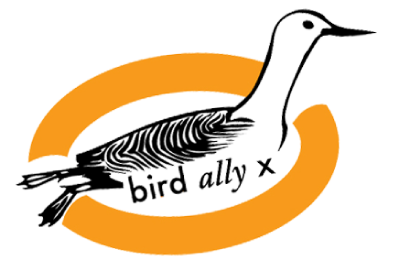After 9 months of deliberation, on December 3 in Van Nuys, the California Fish and Game Commission (FGC) will decide on new regulations banning killing contests. If adopted, these regulations will apply to nongame animals and furbearing animals. Coyotes will be covered under these rules. Your voice is needed.
Below is our letter to the FGC on behalf of Coyote.
California Fish and Game Commission
Michael Sutton, President,
Richard B. Rogers, vice-President
Jim Kellogg, Jack Baylis, Jacque Hostler-Carmesin
Dear Commissioners,
Thank you for engaging in the hard work of bringing the will of Californians as expressed in Assembly Bill 2402 to bear on the California Fish and Game Code.
BIrd Ally X fully supports the advances being made in our state’s relationship with, and regard for, our wild neighbors. The change in Californians’ appreciation for wildlife, wild lands, and wild systems over the decades is very encouraging. As advocates for our patients – injured and orphaned wild animals – we also support the Commission’s commitment to employ ecosystem-based management and use credible science in decisions regarding the wildlife with whom we share our beautiful state.

Coyote pup in care at Bird Ally X/Humboldt Wildlife Care Center (photo: Laura Corsiglia/BAX)
Coyote killing contests are one example of an activity that serves no scientific purpose. They are contrary to the best available science regarding coyote management. We stand with Project Coyote, Center for Biological Diversity, Defenders of Wildlife and others in calling for an end to these contests. We recommend that you give serious consideration to the credible, peer-reviewed science these groups have presented that demonstrates the need for a management plan for coyotes and all predators that takes a rational, effective approach which promotes co-existence.
Natural systems depend on this advance, as do individual animals who are orphaned by the careless disregard for life exemplified in these killing contests.
Non-lethal methods of coyote control (e.g gaurd dogs, lambing sheds, predator lights, etc.) have been shown to be more effective at protecting livestock. Eradication efforts and lethal measures to control coyote populations have been shown repeatedly over decades to fail. Poisons, leg-hold traps, guns, explosives, fire and flood have all been used in gruesome and barbaric attempts to extirpate this animal, iconic and revered in North America for millenia. Adaptable and resilient, coyotes’ population has exploded. As Wyoming folk-wisdom has it, “kill one coyote, two appear.”
Lethal means have been known to be cruel and productive of the opposite of their intended results for nearly as long as they’ve been employed. Still, there are virtually no limitations placed on coyote killing in California. Coyote hunting has rightfully earned a reputation as an irrational blood sport.
There is no legal, scientific or moral justification for killing contests. What constitutes a proper relationship with the natural world is poorly represented in such a contest. The posture of respect that is the hallmark of a true hunter is absent. Now that the spotlight is shining on these gruesome contests we urge the Commission to ban them. To not do so now would be to sanction wanton, senseless killing and set California back in its commitment to science and good stewardship.
California’s wildlife rehabilitators work hard on behalf of our state’s wild animals, supported almost solely by our communities. Our patients are almost exclusively victims of our modern world. Our neighbors largely share our concerns, as do thousands and thousands of others, from all walks of life – it’s commonly perceived that wildlife killing contests are repugnant and must, in the face of true understanding and scientific knowledge, be seen as outdated, outmoded and an out and out travesty.
Coyotes and all wild animals deserve respect. As wildlife care providers, it is our duty and our mission to work to modify those aspects of our lives that cause unnecessary injury and are unnecessarily cruel.
Co-existence is the only humane future, especially since so much has been lost through negligence, cruelty and inaction. The eras of wild animal killing contests are past. That previous generations have decimated or extinguished so many other populations – bisons of the great plains, eskimo curlews, passenger pigeons – in similarly wanton displays is a shame and disgrace yet to be lived down.
The natural world needs people who are compassionate, who are kind, who prefer life over cruelty. Killing contests foster none of these qualities.
We urge you to carry through and help California lead the way into a more rational, civil and humane world. Please end these wanton wastes of real lives. Ban killing contests.
Thank you again for taking up this issue and for the hard work that each of you do.
Project Coyote has started an online petition to put an end to this wantonly cruel, environmentally stupid bloodsport. Read it, sign it, share it here.
Resources and Literature
Fox, C.H. (2006) Coyotes and Humans: Can We Coexist? Animal Protection Institute, Sacramento, California
on the success of non-lethal management that promotes co-existence:
Fox, C.H. (2008) Analysis of The Marin County Strategic Plan for Protection of Livestock & Wildlife: An Alternative to Traditional Predator Control. Master’s thesis. Prescott College, Prescott, AZ. 112 p.
on the importance of keystone predators such as coyote in an ecosystem:
Henke, S.E., and Bryant, F.C. (1999) Effects of coyote removal on the faunal community in Western Texas, Journal of Wildlife Management 63, 1066–1081.
on the failure of indiscriminate coyote killing to protect livestock:
Berger, K.M. (2006) Carnivore-Livestock Conflicts: Affects of Subsidized Predator Control and Economic Correlates on the Sheep Industry. Conservation Biology 20:751-761.




























































